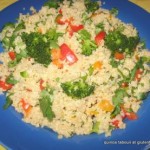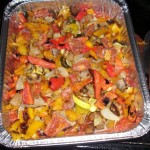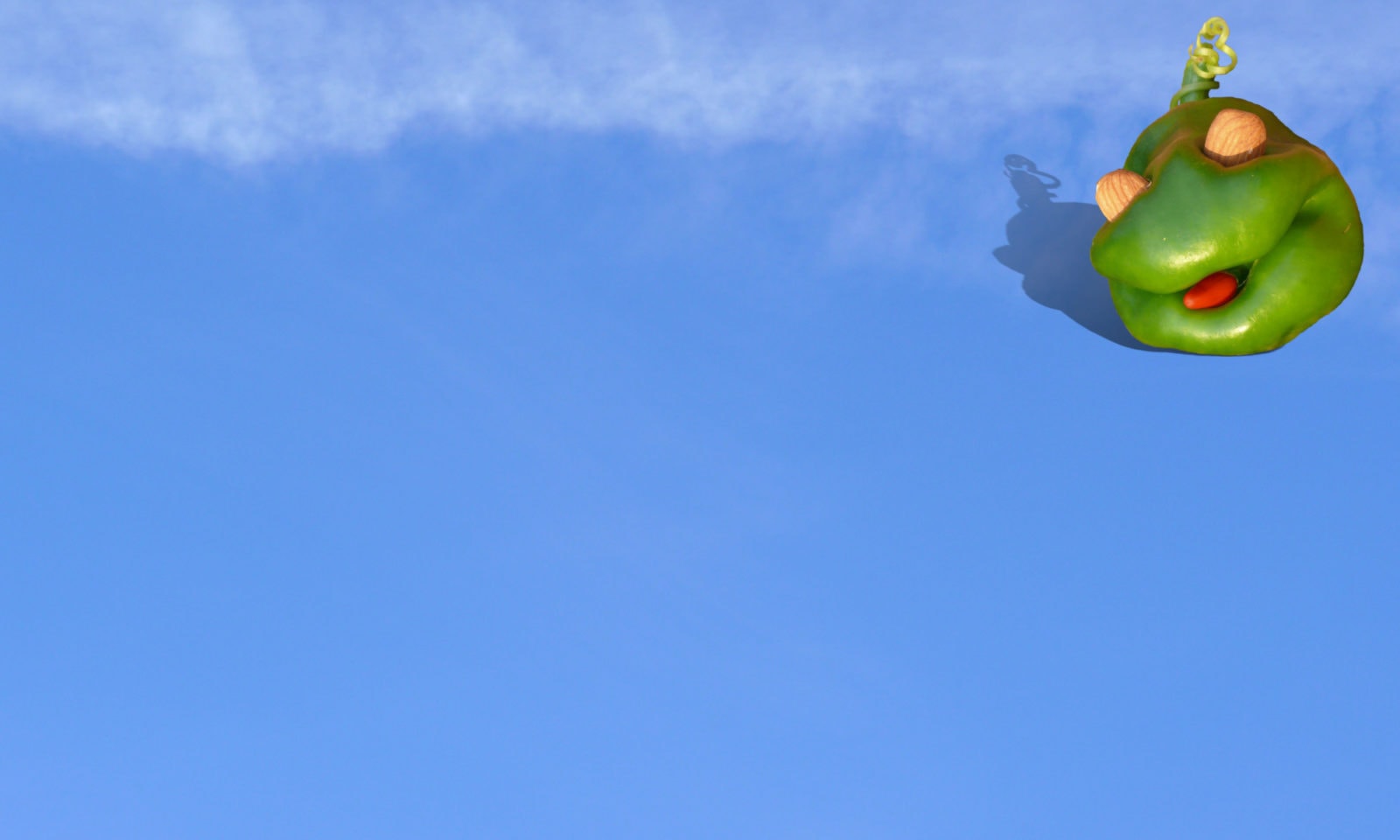The scoop on arsenic, recipes, a giveaway and more below!
There’s been recent headlines about levels of arsenic in rice due to a study published last week. The gluten-free community tends to eat a LOT of rice, so this is pretty important news! Think about it: many gluten-free folks are eating Rice Chex with breakfast, some rice bread with lunch, a few rice crackers for snack and maybe rice pasta with dinner. Arsenic is potentially cancer promoting and may affect brain development and IQ in growing children. A recent Consumer Reports study indicates “worrisome” levels found in food. Currently there are no federal regulations for food, and now groups are suggesting people limit the amount of rice they consume.
Why would there be arsenic in rice? Generally, the arsenic in rice is a byproduct of soil levels and the amount in water, and rice is often flooded. Many regions where rice is grown have high levels, and/or use pesticides with high levels of arsenic.
The gist:
- Brown rice has higher levels of arsenic than white rice
- If you eat it frequently (and if you’re eating most g-free products daily, most likely that means you) Consumer Reports recommends to cut back to just 2-3 serving per WEEK, with less for babies and children.
- Pregnant women, children and babies are at particular risk
- Consumer Reports recommends cutting back, because studies show that the more rice you eat, the more arsenic is in your body.
- FDA recommends “wait and see”
- My take: since g-free folks tend to eat a LOT of rice, we’re the most likely to be affected. Looking into other options simply makes sense, and the worst that can happen is you broaden your horizons.
- The study details are here
- AND a reader kindly forwarded me a Change.org petition for the FDA to set limits on arsenic in rice. Thanks, Anna!
So there are several good options:
- Change the way you cook your rice, by using more water and discarding it. Consumer Reports has more details here
- It seems like some kinds of rice, like basmati, tend to have lower levels of arsenic
- Vary your grains—they are all grown differently and in different climates, regions, etc. and the belief is that other grains have lower arsenic levels:
- Millet—I made this Cinnamon Apple Millet breakfast cereal at a DC Celiacs meeting a while back. It’s easy and yummy, too!
- Teff—my hubby’s favorite chocolate banana bread is teff based, and these hazelnut teff cookies are delish.
- Sorghum
- G-free oats
- Corn—polenta, grits, pasta…the possibilities are endless!

- Go for pseudograins:
- Quinoa-this is my favorite Italian style quinoa pilaf, or try this Quinoa Tabouli from GFE
- Amaranth
- Buckwheat—King Soba noodles are 100% GF, and Bob’s Red Mill has Creamy Buckwheat Cereal
- Incorporate of grain-free options. Nowhere is it written that you *must* eat grains for good health! We often talk about how healthy grains are because of the B vitamins and fiber, but those nutrients can come from a variety of grain-free sources, too.
Tasty grain-free options:
- Sweet potatoes
- White potatoes
- Parsnips, turnips, carrots and other root veggies

- Butternut and acorn squash are seasonal and have a nice carb-y texture
- Beans and lentils–chili season is around the corner
- Eden Foods has Mung Bean Thread noodles that are tested to be gluten-free
- Cauliflower “rice” from Elana’s Pantry or even Roasted Cauliflower
- Cassava (these are my very favorite cassava crackers)
- Zucchini “pasta” from Kalyn’s Kitchen
- Spaghetti squash pasta from Jules Gluten Free
- Bean based pizza crust from Diet Dessert and Dogs
- Chestnut crepes—the fun never ends!
- Traditional Brazilian style cheese bread is made from tapioca. Chebe is one brand, and here’s a recipe by Ginger Lemon Girl
- There are lots of almond flour recipes and coconut flour recipes…more than I can count! Elana’s Pantry, Paleo Parents, the Spunky Coconut , Gluten Free Happy Tummy and many more.
I’m actually mildly allergic to rice and have been many years, so my recipe blog contains very few recipes with rice. There’s even rice-free bread!
Tricia Thompson has a nice interview with more info here, too.
Variety is the spice of life. It makes sense to venture out beyond the rice bowl! Feel free to leave your favorite tips for including foods other than rice in the comments.
Upcoming Event:
Celiac Sprue Association is hosting its 35th Annual Conference on October 4-6th on Long Island in Hauppauge, NY. There will be great sessions on the latest and greatest from the Columbia Celiac Center, dietary tips, gluten-sensitivity, and panels on gluten-free blogging, travel, dining out and much more.
Giveaway #2
Nourishing Meals is a great cookbook which was just released. It just so happens to contain a variety of grains and grain-free recipes, and I’m giving away 2 signed copies. The giveaway ends Weds, so hop on over
Cheryl Harris, MPH, RD is a Registered Dietitian, Nutritionist and Certified Wellness Coach in Fairfax & Alexandria, VA. Cheryl works with people to feel and look their best with a range of specialties, including Celiac Disease, food allergies, pregnancy, breastfeeding, vegetarian and vegan diets, preventing diseases and “whole foods” eating. Let’s get you on your way to achieving your goals. Email her or call 571-271-8742.

Hi Cheryl, very nice article and suggestions. Thank you!
Susan
Cheryl, great article about the arsenic and rice issue. I started a petition asking the FDA for regulation of arsenic in rice and by-products in 2/12 after the Dartmouth study. As I did my research, I found that there has been multiple studies since 2007 talking about arsenic and rice. 5 years! Please spread the word about my petition and sign it as well. Thanks for writing about rice and arsenic. The more educated people are the better. http://bit.ly/xJGMe5+ By the way, loving the teff ideas!
Thanks so much for compiling this article, Cheryl, and for including your recommendations and so many alternative ideas! I’m honored that you included my quinoa tabouli recipe. We really have to keep folks safe. My feelings about arsenic in my food are about equal to my feelings about gluten in my food … i.e., unsafe at any level!
Shirley
Thanks for this, Cheryl. I also share this concern as part of a family who normally eats (until I heard about this whole thing) a ton of rice. I’m loving your alternative ideas, which I plan to start exploring.
One question I have is why potatoes, peanuts and other foods that are grown underground are not also an issue in terms of arsenic levels. Is it the whole “flooding” thing w/ rice? Another question is if organic products are safe since those arsenic levels should be organic, correct? I’m reading that the inorganic arsenic levels are what is harmful. So, an example would be Mary’s Gone Crackers (main ingredient is brown rice) which are organic. Does that mean those products are safer by any means? Just curious if anyone can help with those topics. Thanks!
Anna, Great resource! I added it in to the post.
My pleasure, Shirley. It looks like a super yummy dish, thanks for letting me use the pic. So many battles for clean food…
Katie,
From what I’ve read, arsenic is in trace amounts in many foods, but the main concern is rice, more so than other root vegetables. And studies show that brown rice has higher levels than white. This study breaks it down and it appears that organic rice has less than conventional, and basmati is a safer bet, but still…it’s awfully complicated for the average consumer, and sad an advocacy group had to holler for the FDA to even consider action!
http://www.fda.gov/Food/FoodSafety/FoodContaminantsAdulteration/Metals/ucm319924.htm
Hi Cheryl, thanks for the article. I too love those Casabi crackers, in fact, I got my doctor’s office to start handing them out to their allergic clients and now we can’t find them. We’ve emailed the manufacturer and Amazon to no avail. Do you know where they are available? Thanks for any help you can give me.
Great rice alternative suggestions. Thank you!!!!
Excellent article. Thanks for keeping us informed!
Hi Cheryl,
Wow! You included most of it, great resources. So far. I have seen two patients with rice allergy.
The rice base supplement was not working, so I ran a taste for one pt. the other one was obvious.
Thank you.
I see this was written in 2012…is this still an issue now in 2015 or has the FDA made more strides to correct it? I LOVE rice and with picky eaters in my home, it is a good basic food for us. Thanks!
Yes, Kristen, unfortunately it’s still a thing; do see the 2015 consumer reports for more info.
What is happening with Mary’s Gone Crackers? Amazon just dropped them, and iHerbs, while still selling them, published a warning just as I was checking out, saying they contain a substance proven by Proposition 65 to be causing cancer. I am in remission for a recurring cancer, I went through hell with my treatment, and I have been eating Mary’s Gone Crackers since my release from the hospital 3 months ago. What should I do? Sue them?